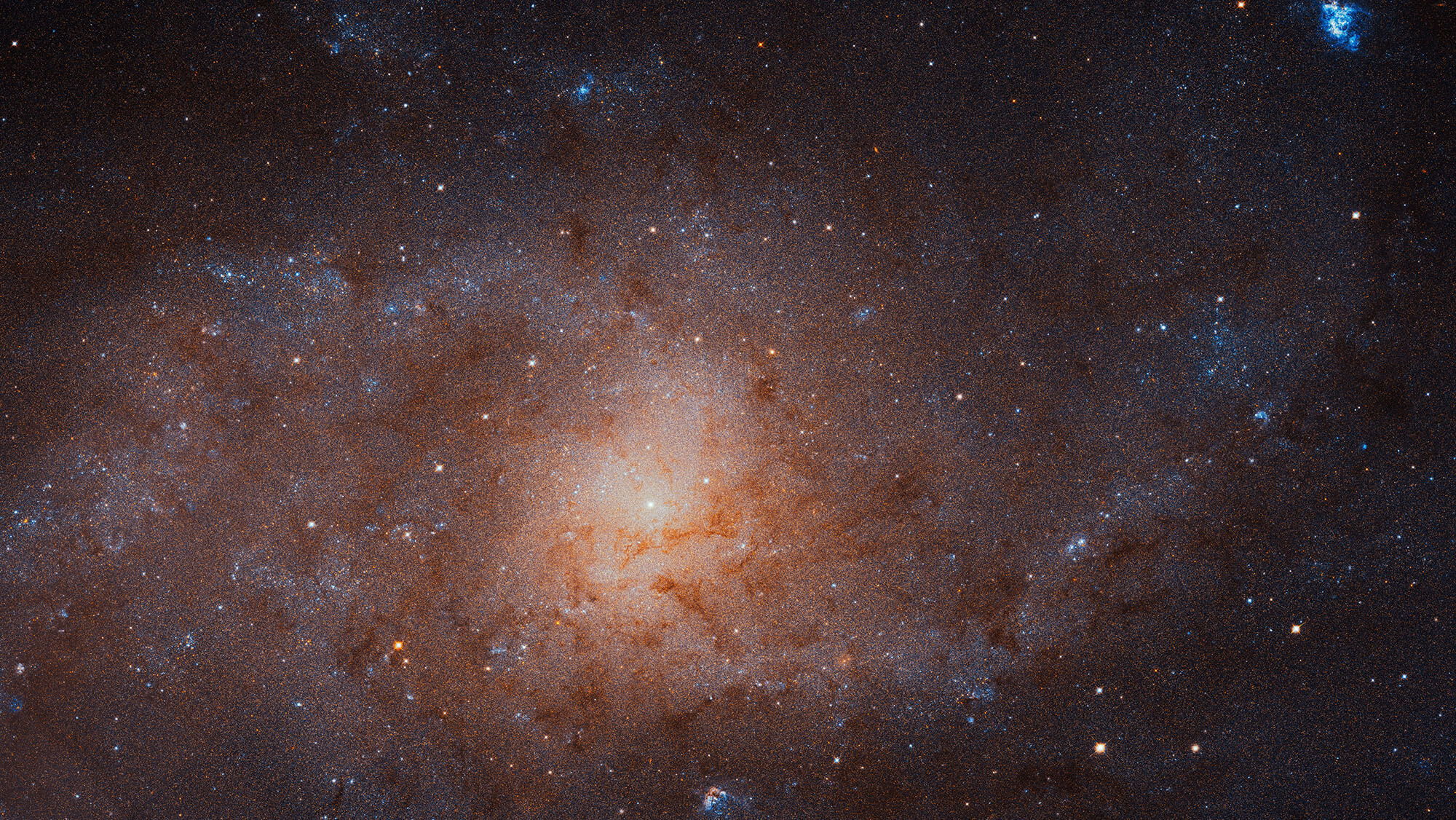The Hubble Space Telescope received the most detailed image of the Milky Way’s nearest neighbor – the Triangle spiral galaxy, located at a distance of three million light years. The panorama of the third largest galaxy in the Local Group gives a fascinating view of the 40 billion stars that make up one of the most distant objects visible to the naked eye.
This image of the Triangle galaxy (also known as Messier 33 and NGC 598) shows the central region and the inner spiral arms. To create a giant mosaic with an initial size of 665 megapixels, the Hubble space telescope needed 54 separate images.
In excellent dark sky conditions, the Triangle galaxy can be seen with the naked eye as a dim, diffuse object in the constellation of the Triangle. Located just three million light-years from Earth, Messier 33 is a prominent member of the Local Group of Galaxies, being the third largest, but also the smallest spiral galaxy in the group. Its diameter is only about 60,000 light years (compared to 200,000 light years for the Andromeda galaxy and 100,000 light years for the Milky Way). As a result, the Triangle galaxy contains at least an order of magnitude fewer stars than ours and two orders of magnitude less than Andromeda, which is not at all easy to imagine when only 10 to 15 million individual stars are visible on this image.
Unlike the two large spirals, the Messier 33 does not have a bright bulge in the center and no jumper connecting its spiral arms with the center. However, the galaxy contains a huge amount of gas and dust, which leads to a rapid star formation rate. New stars are formed in it with the speed of one solar mass every two years.
The abundance of gas clouds in the Triangle galaxy attracted astronomers to conduct a detailed review. When stars are born, they absorb gas and dust, leaving less fuel for new stars to appear. The Hubble image shows two of the four most active areas in Messier 33: NGC 595 and NGC 604. The latter is the second brightest region of ionized hydrogen in the Local Group and one of the largest known star formation regions in it.
A detailed study of the Triangle galaxy is of great historical significance: in combination with the observations of the Milky Way, the Andromeda galaxy and the irregular galaxies of the Magellanic Clouds, it will help astronomers to better understand the formation and evolution of stars in the Local Group.
The Triangulum spiral galaxy
Click To Tweet
The post The Triangulum spiral galaxy appeared first on Upcosmos.com.
